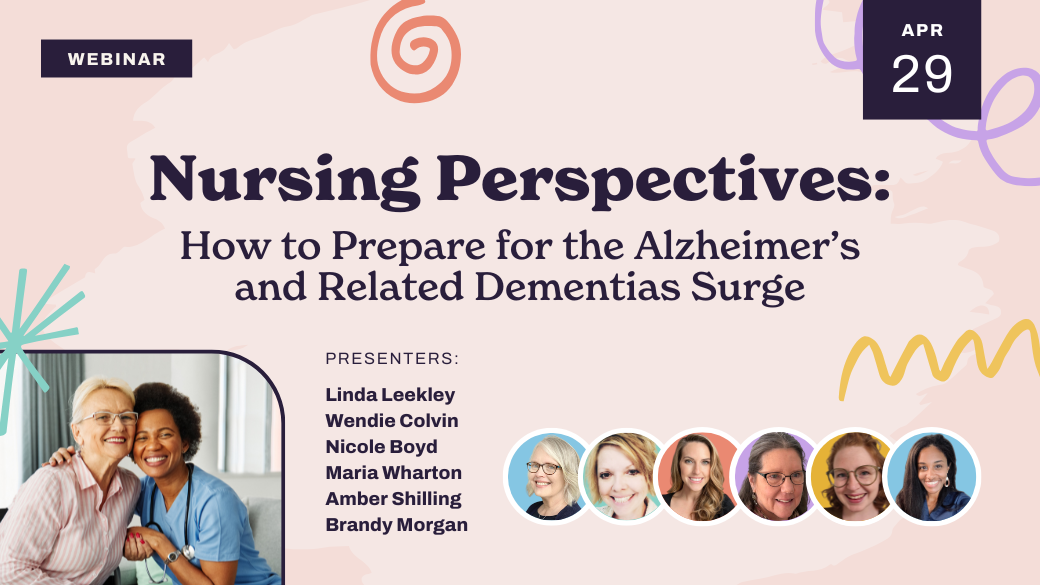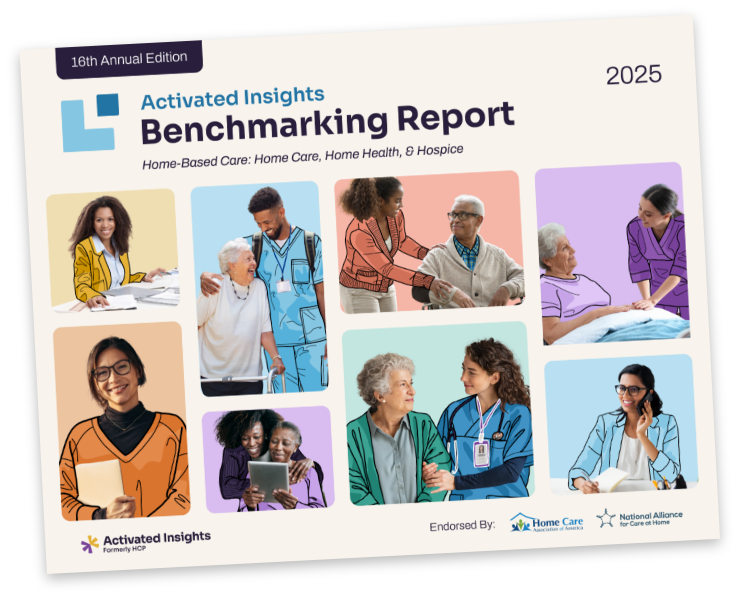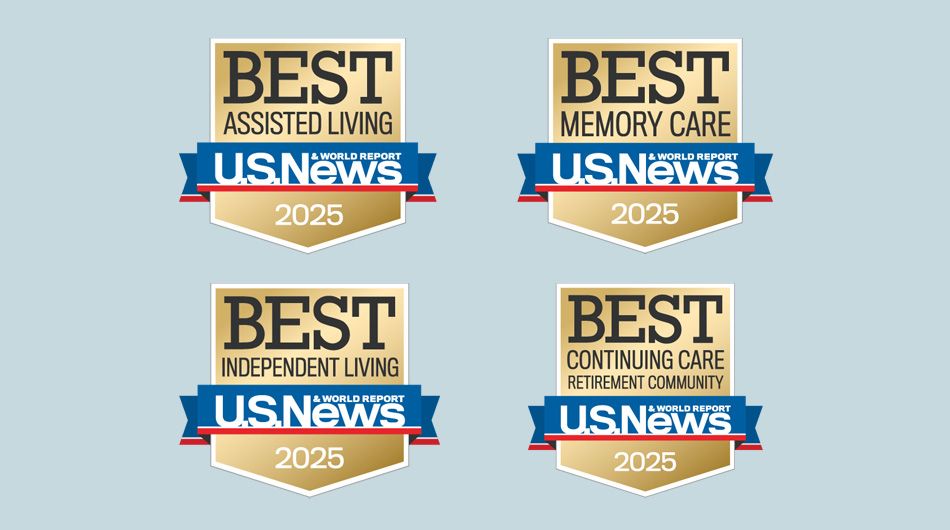6.2 million people aged 65+ currently live with Alzheimer’s, yet some agencies still aren’t taking the time to train their caregivers to support these individuals. Here’s what your team needs to know.
6.2million. That’s the number of people aged 65+ that are currently living with Alzheimer’s. And as the aging population continues to grow, that number will quickly increase over the next few years.
In fact, the demand for home care is so great that more than 7.4 million direct care jobs will need to be filled by 2029 to support that exponential growth – all the more opportunity to begin specializing in caring for clients living with Alzheimer’s disease.
Caring for a person with Alzheimer’s is significantly different than any other type of care.
Tasks that were once simple may become more difficult as Alzheimer’s progresses. It slowly destroys cognitive thinking skills and the ability to carry out routine tasks. Because of this, caregivers need to be aware of everything they can do to manage the unique needs of these individuals.
We asked thousands of caregivers to describe the most challenging aspects of caring for clients living with Alzheimer’s. Here’s what we heard:
While most of these challenges are universal for anyone who cares for clients with Alzheimer’s, educating your staff on how to support individuals through the challenges will benefit both the client and the caregiver.
Here are some tips you can teach your caregivers so they can help support clients living with Alzheimer’s more effectively.
#1: Create a safe atmosphere for daily living.
Caregivers coming into the home will need to recognize that because of the onset of Alzheimer’s, activities of daily living are not as easy for their clients.
In order to create a safe living space, there are some precautions that caregivers should take around the home to protect their clients from any foreseeable accidents.
Here are some ideas to consider:
#2: Remember that comfort is key.
In the later stages of Alzheimer’s, some clients may experience a lack of mobility, and because of this, they may be bedridden or chair-bound. To keep them comfortable, here are a few things to consider:
#3: While feeding a client, take it slow and easy.
Patience is essential during mealtimes with people living with Alzheimer’s. There are a lot of things to consider, but here are a few to start with:
Related content: Do You Know Which Foods Are Best for Someone With Alzheimer’s or Dementia?
#4: Evaluate the client’s emotional needs.
Feelings and emotions can be overwhelming for a person living with Alzheimer’s disease. Understanding the common behaviors and knowing what to watch out for can help.
Repetitive behaviors are by far the most significant. A person with Alzheimer’s may do or say something over and over — like repeating a word, question or activity.
If your caregiver notices any of these behaviors, it’s best to get to the root of the issue and figure out what is upsetting the client.
Emotions of a person living with Alzheimer’s can often have a deeper meaning. If they were to say “you never feed me,” it might mean they’re hungry. To figure out what’s actually going on, caregivers may need to dig a bit deeper.
#5: Take a simple approach to communication.
Communication is arguably one of the most important human abilities. It helps us to be able to relate to each other and express what is going on in our lives. For a person living with Alzheimer’s, this is going to look different in most ways, so caregivers need to be able to adapt.
When it comes to a person living with Alzheimer’s, often the simpler the better. Here are some ideas to consider:
Note: Activated Insights Alzheimer’s Disease Specialist Training is now recognized by the Alzheimer’s Association. This prestigious recognition is based on a comprehensive curriculum review to ensure all courses align with evidence-based Dementia Care Practice Recommendations in the following topic areas: Alzheimer’s and dementia, person-centered care, assessment and care planning, activities of daily living, and behaviors and communication. You can learn more here.
The most important part of caring for a client living with Alzheimer’s? Compassion.
Let’s end with an analogy.
In the book “The Best Care Possible: A Physician’s Quest to Transform Care Through the End of Life,” Ira Byock shares a story about what the first signs of civilization look like.
“A student once asked anthropologist Margaret Mead, “What is the earliest sign of civilization?”
The student expected her to say a clay pot, a grinding stone, or maybe a weapon.
Margaret Mead thought for a moment, then she said, “A healed femur.”
A femur is the longest bone in the body, linking hip to knee.
In societies without the benefits of modern medicine, it takes about six weeks of rest for a fractured femur to heal.
A healed femur shows that someone cared for the injured person, did their hunting and gathering, stayed with them, and offered physical protection and human companionship until the injury could mend.
Mead explained that where the law of the jungle—the survival of the fittest—rules, no healed femurs are found. The first sign of civilization is compassion, seen in a healed femur.”
While a broken femur can’t compare to Alzheimer’s, there’s a lot to be learned from the story above.
It’s an understatement to say that those with Alzheimer’s are dealing with a lot, and like with most things in life, compassion can go a long way.
Read more:
Related Posts












